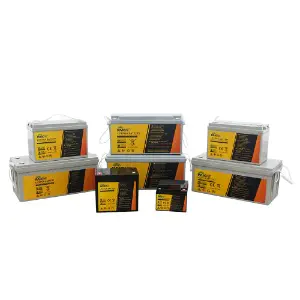Introduction to Battery Chemistry and Charging Requirements
The charging process of any battery is highly dependent on its underlying chemistry, which determines the voltage thresholds, charging currents, and charging profiles necessary to ensure suitable performance and safety. Lithium Iron Phosphate Battery (LiFePO4) technology has distinct electrochemical characteristics compared to traditional lead-acid or nickel-based batteries. This difference makes it essential to carefully consider whether traditional chargers designed for older battery types can be safely used with LiFePO4 cells. Understanding these distinctions helps avoid potential hazards and preserves the battery’s lifespan.

Voltage and Charging Profile Differences
Traditional lead-acid battery chargers typically operate under a fixed voltage and current profile optimized for lead-acid chemistry. For instance, they often apply a bulk charge phase followed by absorption and float charging phases, with voltage limits designed around the properties of lead-acid batteries. In contrast, Lithium Iron Phosphate Batteries have a higher nominal voltage per cell and require different cut-off voltages to prevent overcharging or undercharging. Using a lead-acid charger on LiFePO4 cells may result in insufficient charging or, worse, overvoltage conditions, potentially damaging the battery or causing safety issues.
Impact on Battery Life and Performance
Charging a Lithium Iron Phosphate Battery with a non-optimized charger can cause several problems. If the charger does not provide a proper charging profile, the battery might not reach full capacity, resulting in reduced runtime and performance. Conversely, applying too high a voltage or current can stress the battery’s internal components, accelerating capacity loss or causing thermal runaway in some cases. LiFePO4 batteries typically require precise current and voltage control, with an emphasis on maintaining safe operating temperatures throughout the charging cycle. Therefore, chargers specifically designed or configured for LiFePO4 batteries are crucial to ensure longevity and safety.
Compatibility with Modern Multi-Chemistry Chargers
Fortunately, modern battery chargers often come with multi-chemistry modes that can be selected based on the battery type. Some chargers include preset programs or adjustable settings that accommodate LiFePO4 charging profiles, allowing safe and efficient charging without needing a dedicated charger. These smart chargers monitor voltage, current, and temperature, adjusting the charge accordingly. However, using an older or basic charger lacking LiFePO4 compatibility poses risks. Users should always verify charger specifications and ensure they match the battery’s requirements.
Safety Considerations and Manufacturer Recommendations
Manufacturers of Lithium Iron Phosphate Batteries generally recommend using chargers explicitly designed for their battery chemistry. These chargers incorporate safety features like overvoltage protection, temperature monitoring, and precise current regulation. Ignoring these guidelines and using traditional chargers not only voids warranties but also increases the risk of fire, swelling, or permanent damage. For critical applications such as electric vehicles or renewable energy storage, adhering to proper charging protocols is paramount for user safety and system reliability.
While some traditional chargers may be physically compatible with Lithium Iron Phosphate Batteries, they are often not electrically or operationally suitable due to differences in voltage requirements and charging profiles. Using a charger designed specifically for LiFePO4 batteries or a smart multi-chemistry charger is essential to ensure safe, efficient charging and to improve battery life. Users should always consult the manufacturer's guidelines and choose appropriate charging equipment to avoid performance degradation and safety hazards.
Get to know quickly
We are a professional lithium iron phosphate battery, solar energy storage system, industrial and commercial energy storage system manufacturer.
 +86-133 3592 3377
+86-133 3592 3377
 +86-4008833583
+86-4008833583
 Email: [email protected]
Email: [email protected]

Copyright © Zhejiang Paichen Energy Storage Group Co., Ltd All Rights Reserved.
Battery Energy System Manufacturer
